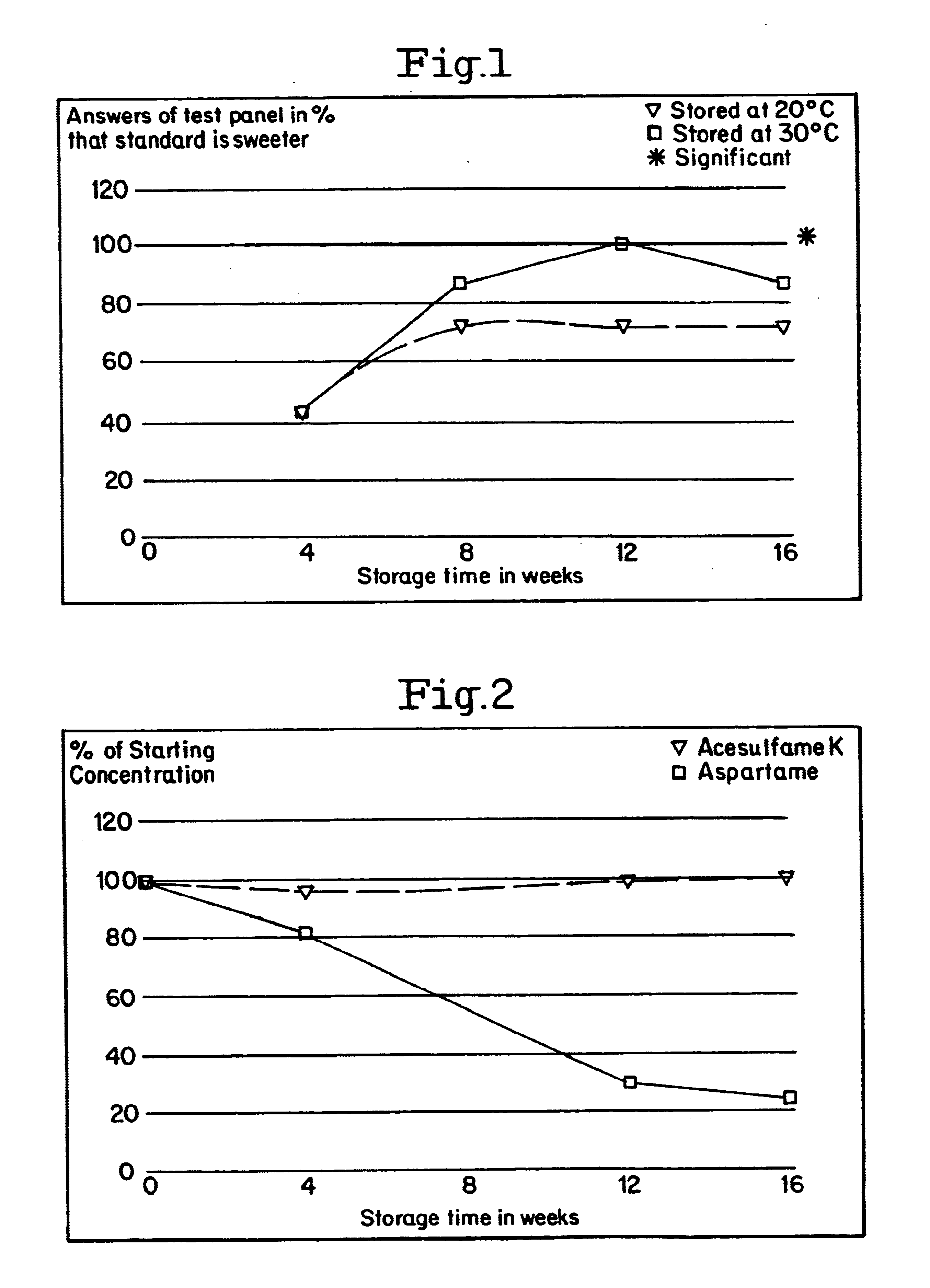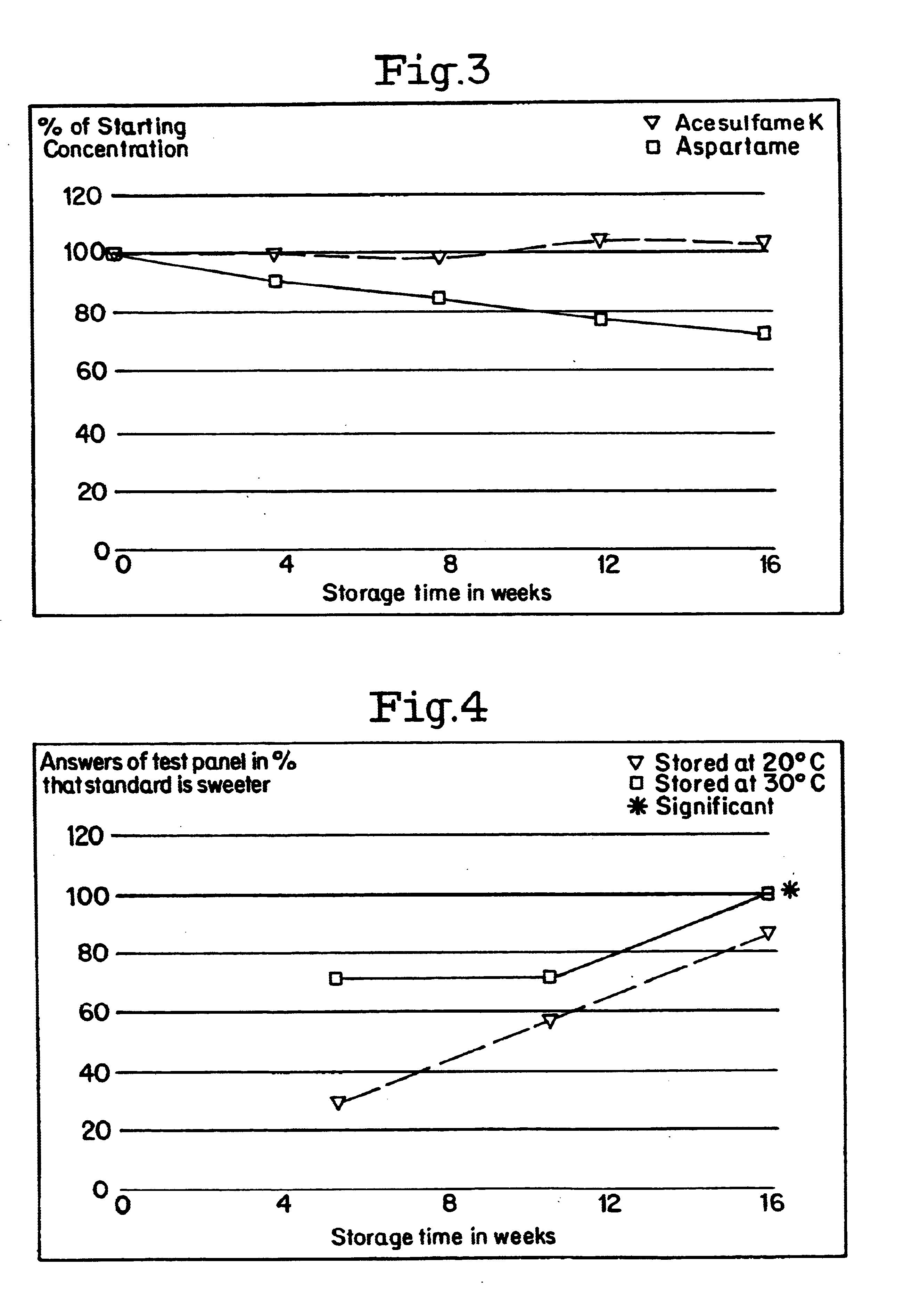Sweet-stable acidified beverages
a technology of acidified beverages and beverages, applied in the field of sweetstable acidified beverages, can solve the problems of loosing especially beverage compositions sweetened with peptide sweeteners such as aspartame, and achieve the effect of stabilizing the sweetness of beverage compositions and prolonging the shelf life of acidified beverages
- Summary
- Abstract
- Description
- Claims
- Application Information
AI Technical Summary
Benefits of technology
Problems solved by technology
Method used
Image
Examples
example 1--
Iced Tea / Oligofructose
Iced tea compositions were prepared having a pH of about 3 and a sucrose-equivalent sweetness of 7, that is, the beverage was equal sweet to a 7% sucrose solution. Typically, the ingredients of Table A were simply admixed under ambient conditions, the Raftilose soluble fiber being added first to the water since it is more difficult to dissolve than the other components. After the beverages were prepared, they were heated to about 195.degree. F. and bottled so as to prevent spoilage.
The ingredients listed in Table A were sourced as appearing in Table B.
example 2-- iced
Example 2--Iced Tea / Inulin
Following generally the procedure and using the ingredients set forth in Example 1, except that Raftiline ST (inulin, also obtained from Orafti, S.A.) was used, the beverage of Table C was prepared having a pH of 3.4:
examples 3-35
Compositions prepared in accordance with Example 1 were aged at 40.degree. F., 70.degree. F., and 90.degree. F. over a period of weeks. The aged compositions were compared with fresh compositions by a panel of five trained panelists. The results appear in Table D (Examples 3-20), which lists the relative sweetness of the aged composition to the fresh composition.
Despite the fact that the high intensity sweetener in the beverages is losing its potency (see Figures hereafter appearing). The beverages in accordance with the invention maintain their sweetness or are even sweeter than a fresh sample.
Following procedure of Example 2, samples of Iced Tea prepared in the invention containing inulin were heat aged at 40.degree. F., 70.degree. F. and 90.degree. F. over a period of weeks. The samples were then compared as before with fresh samples of the same composition. Results appear in Table E for Examples 21-35.
Again, it can be seen that the aged samples maintained or even increased in sw...
PUM
 Login to View More
Login to View More Abstract
Description
Claims
Application Information
 Login to View More
Login to View More - R&D
- Intellectual Property
- Life Sciences
- Materials
- Tech Scout
- Unparalleled Data Quality
- Higher Quality Content
- 60% Fewer Hallucinations
Browse by: Latest US Patents, China's latest patents, Technical Efficacy Thesaurus, Application Domain, Technology Topic, Popular Technical Reports.
© 2025 PatSnap. All rights reserved.Legal|Privacy policy|Modern Slavery Act Transparency Statement|Sitemap|About US| Contact US: help@patsnap.com



